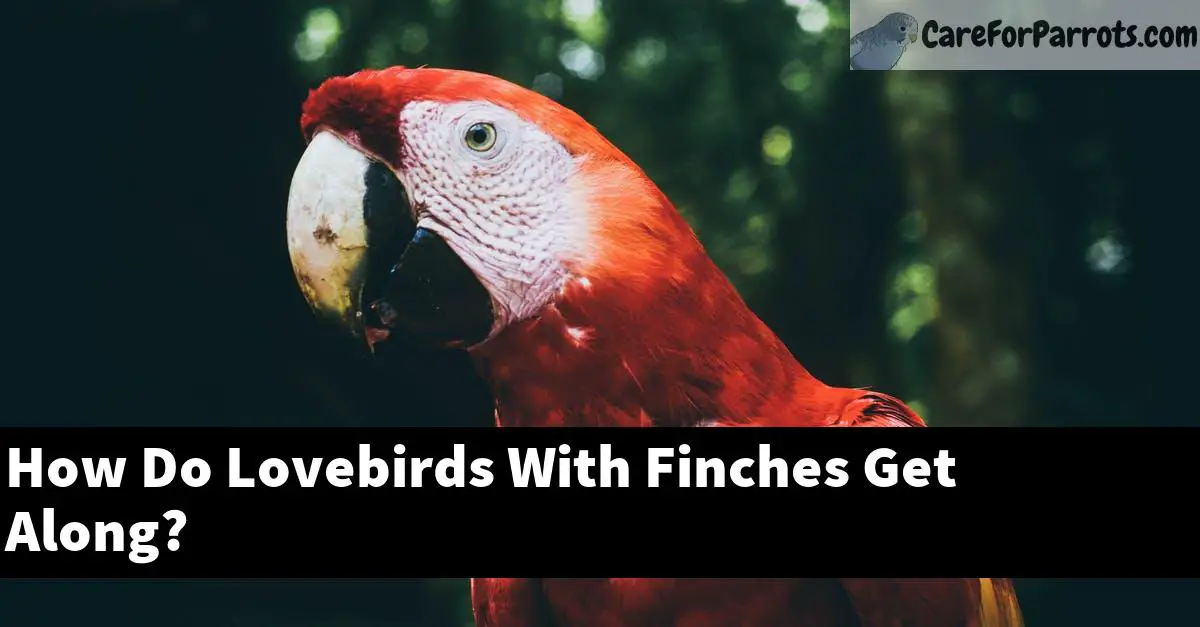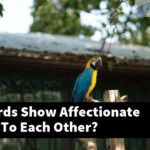Lovebirds and finches, two popular choices for pet birds, have unique traits and personalities that make them fascinating to observe. This article explores the compatibility between these two species and offers insights into how they can coexist harmoniously.
To understand their interactions, we’ll delve into their individual characteristics, social behaviors, and habitat requirements. Keep reading to discover the secrets behind successfully housing lovebirds and finches together.
If you’re looking for a quick answer, it’s important to know that lovebirds and finches can potentially get along in the same environment, but with certain precautions and considerations. The key is understanding their distinct behaviors and providing the necessary space and stimulation to maintain a peaceful coexistence.
Ready to learn more about these captivating creatures and how to create the perfect shared living space? Let’s dive into the details of lovebirds and finches to ensure a harmonious relationship between them.
Table of Contents
Lovebirds: A Closer Look
Personality and Behavior
Lovebirds are known for their affectionate and social nature, which is why they’re often found in pairs. They love to interact, preen, and cuddle with their partners, earning them the name “lovebirds.” However, this also means that they can become territorial and aggressive, especially when defending their mate or nesting site.
Housing Requirements
Due to their active and playful demeanor, lovebirds need ample space to move around and exercise. A spacious cage with horizontal bars is ideal for them to climb and play. Additionally, it’s important to provide toys and enrichment to keep these intelligent birds mentally stimulated.
Finches: A Closer Look
Personality and Behavior
Finches are small, social birds that often prefer the company of their own kind. They’re known for their beautiful songs and passive nature, making them ideal companions for bird enthusiasts. Unlike lovebirds, finches are not known for forming strong pair bonds and are generally less aggressive.
Housing Requirements
Finches require a cage with plenty of space to fly, as they are more active flyers than climbers. A long, horizontal cage with multiple perches at different heights is essential for their well-being. Finches also appreciate natural materials, such as branches and foliage, in their environment.
Combining Lovebirds and Finches
Coexistence Considerations
While lovebirds and finches have the potential to coexist peacefully, certain factors must be considered. It’s crucial to provide a large enough space to accommodate both species comfortably, with separate areas for nesting and feeding. Additionally, be prepared to closely monitor their interactions and intervene if signs of aggression or stress arise.
Environmental Enrichment
To maintain a harmonious relationship between lovebirds and finches, it’s important to offer environmental enrichment tailored to each species. This may include toys, puzzles, and foraging opportunities for lovebirds, while finches may prefer natural branches, foliage, and bird baths.
Matiniy 2 Pcs Pirate Parrot on Shoulder Life Sized Artificial Parrot Toy for Costume Dress-up Accessory for Halloween Party(Multicolor)
$14.99 (as of 15/12/2025 05:55 GMT +03:00 - More infoProduct prices and availability are accurate as of the date/time indicated and are subject to change. Any price and availability information displayed on [relevant Amazon Site(s), as applicable] at the time of purchase will apply to the purchase of this product.)Bird Toys, Parrot Toys for Large Birds,Natural Corn cob and Loofah Slices Bird chew Toys for African Grey Parrots, Macaws, Cockatoos, Amazon Parrot and other Small and Medium-Sized Parrot (Colorful)
$12.97 ($12.97 / count) (as of 15/12/2025 10:30 GMT +03:00 - More infoProduct prices and availability are accurate as of the date/time indicated and are subject to change. Any price and availability information displayed on [relevant Amazon Site(s), as applicable] at the time of purchase will apply to the purchase of this product.)Kaytee Fiesta Parrot Food, Nutritious and Fun Blend, Supports Skin, Feather, Digestion, Brain and Heart Health, 4.5 pounds
16% OffIntroducing the Birds
Introducing the birds to each other gradually and under supervision is crucial to ensure a smooth transition. Start by housing them in separate cages within the same room, allowing them to observe and acclimate to one another. Slowly increase the time they spend together in a neutral, supervised space before attempting to house them together permanently.
Conclusion
In conclusion, lovebirds and finches can potentially get along in the same environment, but it requires careful planning, monitoring, and understanding of each species’ unique needs.
By taking the necessary precautions and providing well-designed living space, you can create a harmonious relationship between these captivating birds.
H2 FAQ
Q: How can I prevent lovebirds from becoming territorial with finches?
A: To prevent territorial behavior, provide a spacious cage with separate areas for nesting and feeding. Monitor their interactions closely and intervene if signs of aggression arise.
Q: What kind of cage is best for housing lovebirds and finches together?
A: The ideal cage for housing both species should be spacious, with a combination of horizontal and vertical bars for climbing and flying. It should also have separate areas for nesting and feeding, as well as multiple perches at different heights.
Q: Can lovebirds and finches breed together?
A: No, lovebirds and finches are different species and cannot interbreed.
Q: How can I introduce lovebirds and finches to each other safely?
A: Begin by housing them in separate cages within the same room, allowing them to observe and acclimate to one another. Gradually increase the time they spend together in a neutral, supervised space before attempting to house them together permanently.
Q: What signs should I look for to ensure my lovebirds and finches are getting along?
A: Observe their behavior closely, ensuring there is no aggression, excessive chasing, or signs of stress. Both species should be able to feed, rest, and play without disruption from the other.
























